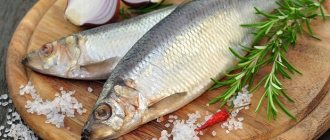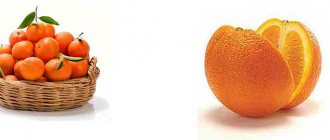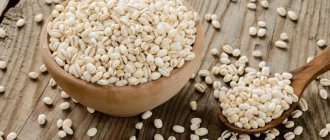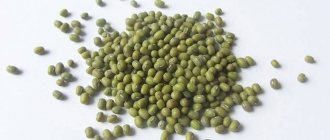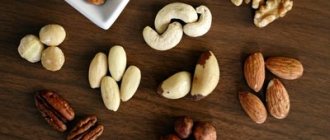For several centuries, tomato juice has been considered one of the important products in the diet of people living in many countries of the world. This is explained by its unique vitamin composition and beneficial properties for the human body. Tomato products play a special role in dietary nutrition due to their low calorie content and high nutritional value. The most healthy option is the homemade juice, which is prepared without adding salt. If it is impossible to consume a natural product, you are allowed to drink a purchased one, which is currently produced on an industrial scale and represented by several companies. Each of them has its own production technology.
Tomatoes against cancer
The antitumor effect of tomatoes is explained by the presence of the natural oncoprotector lycopene in their composition. This substance is part of the group of carotenoids that give tomatoes their bright scarlet color [1].
Lycopene, along with the plant pigment beta-carotene, is a precursor to vitamin A. Moreover, in terms of its antioxidant power, the anti-cancer dye is 2 times stronger than its “brother.” Considering that oxidative stress underlies tumor development, lycopene inhibits the process of gene mutation and protects T lymphocytes from damage by free radicals. In addition, the pigment resists the binding of cancerous foci to endothelial cells, which prevents them from entering the blood, and, consequently, disrupts the process of growth of tumors [3].
The leaders in lycopene content are tomatoes that have undergone minimal heat treatment (without sterilization). This phenomenon is explained by the destruction of cell fibers (when heated), which facilitates the release of plant pigment to the outside. In addition, when combining tomatoes with vegetable oil, the pharmacological value of the dye doubles.
To prevent cancer, it is enough to consume 10-15 mg of pure lycopene per day. This portion of the substance is contained in 500 ml of tomato juice (natural) or 500 g of fresh tomatoes.
Interesting results were obtained by American scientists from the Detroit Cancer Institute, who observed patients with prostate cancer (in the early stages). Moreover, all patients were in the same condition and were preparing for surgery. Before the start of the experiment, the patients were tested to determine prostate specific antigen (PSA), and then they were divided into 2 groups identical in all respects. Patients from the first category consumed 15 mg of lycopene twice a day, and those from the second did not receive the pigment. After 30 days, a blood test of patients taking the antioxidant showed a 20% reduction in a tumor marker (TAP). In the second group of patients, the level of prostate antigen slowly increased. In addition, after surgical interventions, doctors conducted a comparative analysis of the removed tumors. Thus, in people who consumed lycopene, cancer cells had a minimal tendency to metastasize, and the size of the tumors was much smaller than in patients who did not take the pigment. Based on these studies, scientists came to the conclusion that taking lycopene helps to weaken the malignant process and reduce the risk of relapse of the disease [4].
Along with this, Harvard oncologists conducted a large-scale experiment, as a result of which they were able to “expand” the evidence base of their American colleagues. In the course of research, scientists have established a direct relationship between the amount of tomatoes consumed and a decrease in the severity of malignant processes (including cancer of the stomach, bladder, esophagus, colon, cervix, pancreas and breast). In addition, it is advisable for smokers to consume natural juice to reduce the risk of developing pulmonary emphysema. In order to minimize the harm caused to health, it is advisable to drink 150 ml of tomato juice after each cigarette [5].
The effect of juice on the functioning of organs and systems
The coherence of metabolic processes occurring inside our body largely depends on the components present in the product.
- Thanks to the systematic consumption of tomato juice, the intestines are freed from toxins and the functioning of all internal organs is normalized.
- The chemical elements of tomatoes in the form of juice have an anti-carcinogenic effect on tissue structures.
- With its help, it is recommended to prevent vascular pathology and rid the body of toxins and radionuclides.
The antioxidant and anticarcinogenic effect of tomato juice is provided by lycopene. When it enters the body along with juice, cancer prevention is achieved.
- For patients with neoplasms, the value of the product lies in the ability to slow down the growth of the pathological focus and alleviate the general condition during illness.
- For healthy people, such a drink is a way to further maintain health and ensure longevity.
The healing effect of tomato juice on the intestines is invaluable. In addition to general cleansing and antimicrobial effect, it reduces putrefactive processes, improves the absorption capacity of the intestinal epithelium, and improves the outflow of bile.
Drinking tomato juice is recommended by doctors for:
- urolithiasis and cholelithiasis;
- disturbances of water-electrolyte metabolism;
- hypertension;
- diseases of the cardiovascular system and heart.
Tomato juice is good for diabetics. It is the only one that does not increase blood glucose levels, but regulates its level. Against the background of a diet containing juice, intravascular fat deposits are dissolved and cholesterol is removed from the body.
Varieties of tomato juice
Currently, the vegetable drink is present on the shelves of almost all grocery stores. Moreover, the packaging of most of them states “100% natural juice.” However, this is often nothing more than a marketing ploy, since drinks differ in ingredient composition and manufacturing methods.
Types of tomato juice (depending on production technology):
- Freshly squeezed. To prepare the drink, raw ripe tomatoes collected during the mass fruiting season are used. In our own production, nectar is extracted from the pulp of tomatoes, passing through a fine sieve or juicer (preferably auger type).
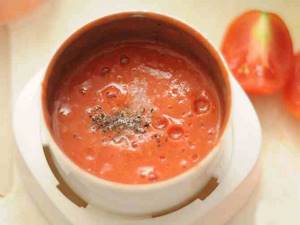
The packaged drink is obtained by direct extraction, subjected to minimal heat treatment (pasteurization, sterilization). However, due to their short shelf life, such fresh juices are rarely found on store shelves.
- Restored. The production of such juices consists of two cycles: boiling the tomatoes to a thick puree and then diluting it with clean water (to the required consistency). This production technology (canning) allows us to obtain products with a long shelf life in almost any season of the year. However, unlike freshly squeezed juice, the “boiled” drink contains much less nutrients. This means it is less useful for the human body.
In order to determine the quality of the juice, you need to pay attention to the duration of its storage and the harvest season. If in summer-autumn the date of production of nectar is close to the period of purchase, most likely it is a natural product. The shelf life of such goods often does not exceed 2 months. If the drink is labeled as a winter or spring season, the juice is likely reconstituted from tomato concentrate. In addition, with long shelf life, it is better to refuse to buy nectar (since it contains a lot of preservatives) [6].
How to select and store
The composition of the finished packaged juice should not include sugar, flavor enhancers and dyes. It must be prepared by direct pressing. The packaging must not be damaged in any way. It is necessary to check the expiration date before purchasing. For greater benefits, it is recommended to purchase a drink with pulp. The product should not be stored in the refrigerator for longer than 48 hours.
For long-term storage, it is necessary to boil freshly squeezed juice and preserve it in sterilized jars.
Is it possible to freeze
The product can be frozen in glass, plastic, or polyethylene containers. If you plan to freeze in a silicone or metal form, it does not need to be pre-greased.
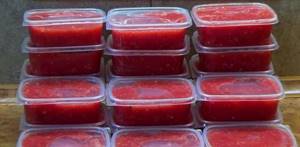
Chemical composition
Tomato juice competes with carrot nectar in terms of provitamin A concentration, and is even ahead of citrus fruits in terms of ascorbic acid content.
In this case, the ratio of BJU (%) in fruits is 16:2:81. Energy value of tomato juice
| Name | Concentration of substance in 100 g of drink, g |
| Water | 94,24 |
| Carbohydrates | 3,53 |
| Sugar | 2,58 |
| Alimentary fiber | 0,4 |
| Squirrels | 0,85 |
| Fats | 0,29 |
Composition of tomato juice
| Name | Substance content in 100 g of drink, mg |
| Vitamins | |
| Ascorbic acid (C) | 70,1 |
| Choline (B4) | 6,8 |
| Niacin (B3) | 0,673 |
| Alpha tocopherol (E) | 0,32 |
| Pyridoxine (B6) | 0,07 |
| Thiamine (B1) | 0,01 |
| Riboflavin (B2) | 0,078 |
| Phylloquinone (K) | 0,0023 |
| Macronutrients | |
| Potassium | 217 |
| Sodium | 253 |
| Phosphorus | 19 |
| Magnesium | 11 |
| Calcium | 10 |
| Microelements | |
| Iron | 0,39 |
| Copper | 0,42 |
| Zinc | 0,11 |
| Selenium | 0,0005 |
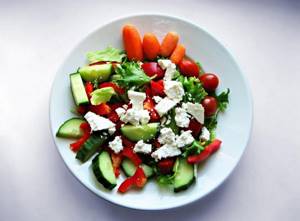
A distinctive feature of tomato juice is its low calorie content. 100 ml of the drink contains no more than 17 kcal, which allows it to be used in the diet of overweight people [7].
7-day juice menu for weight loss
You should drink at least a liter of tomato drink every day for a week.
1 day: about 400 gr. baked potatoes.
Day 2: half a kilogram of cottage cheese without fat, seasoned with sour cream.
Day 3: about 1 kg. any fruit (not banana) or berries.
Day 4: about 500 gr. turkey breast, baked without butter
Day 5: 500 gr. dried apricots. It can be replaced with other dried fruits, but not raisins or figs.
Day 6: 1 liter of kefir or yogurt is enough.
Day 7: half a kilogram of boiled low-fat sea fish.
I recommend trying:
How to make tomato juice at home
Beneficial features
Tomato juice is a natural “regulator” of glucose in diabetes mellitus. In addition, the drink accelerates the transformation of fat into energy, helps with constipation, hypertension and sleep problems. However, you should not abuse it, since an overdose can cause the following adverse reactions from the body: gastritis, kidney stones, heartburn, diarrhea, liver pain, attacks of nausea.
Diabetics, depending on age and severity of the disease, are allowed to drink no more than 200 ml of nectar per day [8].
Benefits of tomato juice (if drunk regularly):
- Normalizes metabolism, reduces the harmful effects of carcinogens, helps remove radionuclides from the blood.
- Activates natural antitumor immunity, prevents the risk of cell mutation, and provides an antioxidant effect.
- Stimulates the synthesis of the hormone of “happiness” (serotonin), increases resistance to stress, and improves vitality.
- Suppresses the growth of pathogenic flora, prevents damage to mucous membranes, and accelerates the healing of erosive wounds.
- Thins the blood, increases hemoglobin, has an anti-sclerotic effect in case of high cholesterol.
- Strengthens the capillary wall, improves the appearance of skin and hair.
- Increases lactation, restores sexual function, increases libido.
- Stabilizes the heart rhythm, strengthens the myocardium, improves oxygen supply to the brain.
- Stimulates intestinal motility, accelerates the transformation of fat into energy.
- Inhibits the growth of malignant tumors and reduces the risk of metastases [9].
However, despite the advantages, it is advisable to limit the intake of tomato juice in case of gastritis, cholecystitis, hepatitis, increased hemoglobin, pancreatitis, gout, cirrhosis of the liver and stomach ulcers.

Other contraindications:
- allergy to plant pigments (in particular beta-carotene and lycopene);
- poisoning accompanied by vomiting;
- children's age (from 0 to 1 year);
- hemophilia;
- tendency to stone formation in the kidneys;
- gastroesophageal reflux;
- increased secretion of gastric juice;
- when breastfeeding, if the baby has a rash [10].
In addition, drink tomato juice with caution in case of increased acidity of gastric secretions. In this case, it is better to replace the raw product with a heat-treated drink brewed in a slow cooker or juicer. At the same time, in order not to provoke gastritis or ulcers, it is advisable to consume it an hour after meals.
Remember, drinking tomato on an empty stomach, as well as washing down food with it, is only permissible if the acidity of the gastric secretion is normal or low. Otherwise, you may cause irritation of the gastric mucosa.
Contraindications and side effects
Despite the benefits of the product for the human body, its use in some cases can be harmful to health.
You should not drink the drink:
- for chronic gastritis with high acidity in the acute stage;
- in the acute stage of peptic ulcer with a high risk of perforation of the stomach wall;
- with enteritis and chronic colitis with periodic relapses;
- with frequent heartburn;
- if you are allergic to the product or have a tendency to it;
- with severe pancreatitis;
- in children under 2 years of age;
- with severe damage to the gallbladder and liver.
During pregnancy and lactation, the norm for drinking the drink should be strictly observed, since if it is exceeded, an allergic reaction often develops in the mother and baby.
Patients with diabetes must consult a specialist before including tomato juice in their diet. which will determine the advisability of its use and the required daily intake.
If the dosage is significantly exceeded, the following side symptoms may occur:
- nausea, in rare cases vomiting;
- increased gas formation and bloating;
- pain in the epigastric region;
- heartburn;
- frequent urge to urinate;
- diarrhea;
- rash;
- hyperemia;
- itching of the skin.
The principle of creation at home
Considering that preparing tomato juice is not a complex high-tech process, you can easily create the drink yourself. In order to get a liter of healthy nectar you will need overripe fleshy tomatoes (1.5 kg), sugar (15 g) and salt (3 g). Moreover, the amount of fresh tomatoes directly depends on the required volume of the drink. It is advisable to select them yourself, focusing on the color and taste of the product. Both a juicer and a meat grinder with a fine nozzle are suitable as a device for processing fruits.
Let's prepare homemade nectar for the winter (step by step):
- Cut the washed tomatoes into small slices (4-6 parts).
- Grind the tomatoes in a meat grinder or juicer. If you don’t have kitchen equipment, squeeze the nectar through a sieve. If the puree turns out to be of uneven texture, the procedure must be done again.
- Pour the vegetable puree into a fireproof container, place on the stove, and bring to a boil. In this case, we can the fruit drink.
- Add sugar and salt to the mixture. After boiling, remove foam from the surface. To add a piquant taste, you can add your favorite spices (basil, onion, garlic, black pepper) to the drink. The taste of homemade preparations can be both sweet and salty, spicy and sour.
- Prepare the jars. To do this, thoroughly rinse the glass container with soda and then inspect it for cracks. After this, sterilize the jars on the grill of a pressure cooker, in a preheated oven (at a temperature of 150 degrees) or over a pan of boiling water. The processing time for one-liter jars is 15 minutes, two-liter jars – 20 minutes, three-liter jars – 25 minutes.
- Boil the mixture for 2-3 minutes over high heat, then turn the flame down to low. Simmer the tomato juice for another 15 minutes (stirring constantly).
- Pour the finished concentrate into warm sterile jars and roll up.
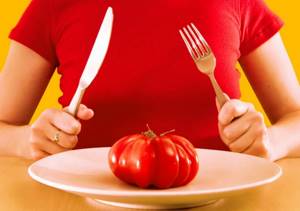
Cool the workpieces under a thick blanket, after turning them upside down. If traces of liquid are visible on the floor, the cover should be replaced. After complete cooling, the canned tomato is removed to a cool place: a cellar, an insulated balcony or a basement.
Tomato-based diets
Considering that 100 ml of tomato juice contains only 17 calories, it is used in dietary programs aimed at combating excess weight. This tasty drink is suitable both for fasting days and for following strict weight loss plans.
Tomato nectar not only helps cleanse the body of toxins, but also stimulates the involvement of fats in active metabolism, resulting in the utilization of lipids into energy. However, to obtain a pronounced therapeutic effect, it is better to use freshly squeezed juice (fresh) rather than store-bought juice. At the same time, for self-squeezing, you should choose ripe fruits, since unripe tomatoes contain the toxic substance solanine. In addition, in order to avoid fluid retention in the body, it is advisable to drink the juice in its natural form without salt, sugar and spices [11].
Remember, drinks in bags and cans are prepared from reconstituted concentrate with the addition of preservatives and flavors. Such a product is of no value to the human body.
Fasting day menu with tomato nectar (one-day diet):
- breakfast: 200 ml of freshly squeezed tomato juice, 20 g of whole grain toast;
- lunch: 200 ml tomato nectar;
- lunch: 230 ml fresh tomato juice (seasoned with red pepper), 100 g brown rice.
- afternoon snack: 250 ml tomato-apple puree;
- dinner: 200 ml tomato juice, 10 ml flaxseed oil.
This diet plan will help relieve the body after drinking alcohol and a lavish feast, as well as refresh your complexion before going out. For better absorption of the drink, you need to “chew” it a little before swallowing.
For minimal weight adjustment (minus 1-2 kg), you can use the current express method, designed for 3 days.
Three-day fasting on tomato juice
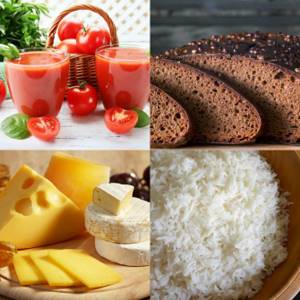
First day (menu):
- breakfast: 230 ml of tomato juice, 30 g of dried rye bread, 20 g of hard cheese;
- lunch: 200 g of tomato nectar, 100 g of boiled unpolished rice, 70 g of baked apples;
- dinner: 250 ml fresh tomato juice, 100 g boiled chicken (homemade), 50 g boiled rice;
- at night: 150 g tomato.
Second day diet:
- in the morning: 230 ml of tomato juice, 150 g of salad from any fruit (except bananas, grapes, raisins);
- lunch: 200 ml fresh tomato juice, 100 g boiled fish (preferably sea fish), 50 g tomato and cucumber salad, 5 ml lemon juice;
- dinner: 200 tomato nectar with pulp, 50 g boiled rice;
- in the evening before bed: 150 ml of fresh tomato juice.
Third day (diet):
- breakfast: 230 ml tomato juice, 50 g oatmeal;
- lunch: 200 ml of tomato juice, 70 g of boiled veal, 10 g of basil;
- dinner: 250 ml of tomato nectar, 50 g of lettuce (seasoned with vegetable oil).
The results of the diet will be more noticeable if you perform fasting at least 2 times a month. At the same time, you should not consume alcohol, white bread, starch, sugar and unhealthy sweets. If the diet is poorly tolerated and you dream of familiar food, the diet should be supplemented with vegetable products (carrots, cucumbers, zucchini, sweet peppers) and herbs.
To consolidate the results obtained, leave a glass of tomato juice in the daily menu. If desired, the drink can be enriched with garlic, green onions, parsley or dill (pre-beat in a blender).
Remember, when losing weight, it is important to drink at least 2.5 liters of filtered water per day (maximum 4 liters).
The tomato diet is great for unloading the body during Lent.
The three-day menu consists of:
1. Breakfast: 1 boiled egg and tomato juice. Instead of juice, you can drink a cup of green tea or a sugar-free chicory drink.
2. The afternoon snack consists of 100 g. cottage cheese without fat and a glass of smoothie consisting of tomato and bell pepper.
3. For lunch, you can eat boiled turkey breast with a salad of apples, carrots, cucumbers and cabbage.
4. For dinner you can drink grape or berry juice. Also drink an infusion of rose hips or medicinal herbs. And such a menu should be maintained for 3 days.
How to use it correctly
Tomato juice is a storehouse of nutrients. However, in order to get the maximum benefit from the product, it is important to know how to prepare and drink it correctly.
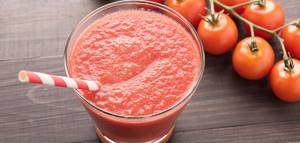
Subtleties of consuming vegetable drink:
- Juice with pulp that has not been subjected to heat treatment is most beneficial for health. You can get such a drink using auger juicers, which do not have the usual knives or centrifuge inside (cold pressing). This technology eliminates the heating of tomatoes on the grater cutters, as a result of which many useful substances are retained in the product. This cocktail should be drunk immediately after preparation, since after 30 minutes its usefulness decreases 10 times.
- Due to the content of organic acids, tomatoes cannot be combined with proteins (eggs, meat, fish, milk, cottage cheese) and starches (bread, potatoes, radishes). This will help minimize the risk of stone formation in the kidneys and gall bladder. In addition, when combining proteins and tomatoes, the pancreas may malfunction.
- Tomato juice goes well with herbs (cilantro, parsley, celery, green onions), nuts (walnuts, hazelnuts, almonds), vegetables (cabbage, peppers), vegetable oil (linseed, olive, corn).
- To avoid bloating, the product is eaten separately from food, ideally 30 minutes before a meal. However, for gastritis, ulcers, cholecystitis of the gallbladder or high acidity of the stomach, the juice should be consumed an hour after meals.
- To improve the absorption of vitamin A, it is advisable to combine nectar with vegetable oil and sour cream.
- After eating fresh juice, your mouth should be rinsed with clean water (to prevent destruction of the enamel).
- When mixing different juices, you should adhere to the following rules: “red with red”, “green with green”, “yellow with yellow” (even if you really want to combine multi-colored nectars).
In addition, moonshine and vodka diluted with tomato juice cause less harm to the body than strong alcohol.
Tomato juice in questions and answers
At what age can the product be introduced into a child’s diet?

It is strictly forbidden to give fresh tomato nectar to infants up to one year old (due to the aggressive effects of organic acids on the baby’s stomach). After one and a half years, the drink can be introduced into the children's diet in small doses (no more than 30 ml at a time). It is important to monitor the child’s reaction. When the first symptoms of an allergy appear (rash, colic, swelling, vomiting, diarrhea), the drink should be discontinued. If the stool does not harden and there is no negative reaction, the portion of nectar can be increased to 100 ml per day [12].
Which packaged juice is better to choose?
When choosing store-bought nectar, it is recommended to pay attention to the “thick” drink in a glass container. The labels of quality samples should include the inscription “juice with pulp.” This marking means that the volume fraction of the drink accounts for at least 8% of the fibrous mass (TR CU 023/2011 and GOST R53137-2008).
The best producers of tomato juice: “Santal”, “J7”, “Sandora”, “Rich” (rating of an independent examination of the Union of Consumers “Roskontrol” + consumer reviews).
Is it possible to make juice from tomato paste?
Yes. However, this drink contains few useful substances, since the tomato paste is subjected to heat treatment, which destroys the nutrients.
Can tomato juice cause an exacerbation of urolithiasis?
If you drink high-quality nectar in reasonable doses (up to 150 ml at a time), the pathology will not worsen. The main thing is to consume it separately from proteins and starches. In addition, tomato juice has diuretic and choleretic effects on the body.
Is it permissible to drink juice while breastfeeding (BF) if you have drank it before?
Depending on the individual characteristics of the child. It is useful for women on breastfeeding to drink tomato juice, provided there is no gas formation and colic in children. The product is introduced into the menu gradually, starting with small portions (15 ml) and pre-diluted with boiled water.

For a nursing woman, the optimal mode of juice consumption is 2 times a day (morning and evening after the baby is full). If the baby is not allergic, the portion of the drink can be increased to 150 ml.
Is it true that tomato juice increases male potency?
Yes. Tomato juice is very useful for men, as it improves sperm quality, increases sexual stamina, and stimulates testosterone synthesis. In addition, the drink is effective for prostatitis, low potency and inflammation of the testicles (due to the high concentration of lycopene) [3].
How to remove tomato juice stains
To remove fresh stains, you can use table vinegar: dilute the essence with cool water (in a ratio of 1:2) and apply to the contaminated area. After 5 minutes, rinse the fabric thoroughly with hot soapy liquid. In emergency cases (on an airplane or train), the stain should be quickly covered with salt (for 20 minutes) and then rinsed under running water.
